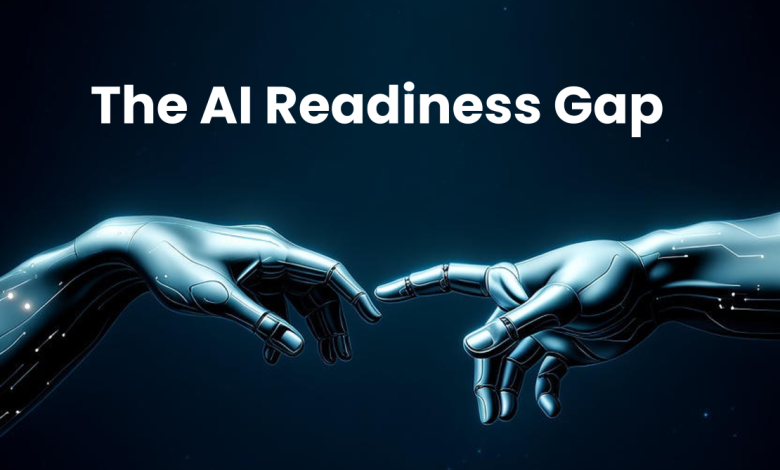
The data is stark. 95% of generative AI pilots deliver zero measurable business impact according to MIT research. 42% of businesses scrapped most of their AI initiatives in 2025 was a key finding in a survey of executives by S&P Global Market Intelligence, and with up to $40 billion flowing into AI by enterprises in 2025, these are not rounding errors. They represent a fundamental misunderstanding by executives of what separates successful AI implementations from expensive misfires.
Here is the uncomfortable truth. Most organizations are not running real pilots. They are running superficial demonstrations destined to fail. Our advice is simple: stop running pilots that will not scale and start designing for success from day one.
Effective pilots – both AI and traditional IT – understand constraints from the outset. They address genuine workflow integration, data sustainability, and organizational accountability before a single line of code is written.
Understanding Custom AI Pilots
In the evolving landscape of AI adoption, organizations can categorize their implementations along a spectrum of customization. At one end are simple activations, where pre-built AI features in existing tools are toggled on for immediate gains. Moving toward greater tailoring, integrated enhancements involve configuring APIs or plugins to augment current systems, like connecting OpenAI’s API to a content management system. Custom pilots represent the most ambitious category, demanding substantial work from cross-functional teams to develop bespoke solutions on proprietary data, such as marketing mix modeling or custom lead scoring engines.
This article focuses exclusively on custom pilots because that is where the 95% failure rate lives. These high-stakes implementations promise genuine competitive advantage but carry the highest risk of becoming expensive lessons in what not to do.
The Learning Gap That Kills Pilots
MIT’s research revealed the primary reason AI pilots fail: the “learning gap.” It is not inadequate technology. Current AI models work remarkably well. The problem is that organizations do not understand how to design workflows that capture AI’s benefits while managing its limitations.
This gap manifests clearly: while 80% of organizations explored AI tools, only 5% successfully deployed custom solutions. The successful implementations share specific themes: they redesign workflows around human-AI collaboration, they empower frontline managers rather than centralizing control, and they focus intensely on narrow but high-value problems.
The challenge is building organizational capability and capacity to make AI work, not proving the AI itself works.
The Success Checklist
Organizations that build successful custom pilots must address four critical pillars before development begins. These are not theoretical maturity frameworks. They are practical prerequisites that determine whether you will bridge the AI readiness gap.
1. Decision Architecture: Who Owns the Outcome?
Custom AI pilots fail most often because no one clearly owns the business outcome. Data scientists build models, IT manages infrastructure, and business units consume outputs. Accountability fragments across these boundaries, and the pilot gets abandoned when implementation gets difficult.
Misunderstandings about project purpose is the most common failure cause according to research by RAND Corporation. When technical teams do not understand how their work connects to business decisions, they optimize for the wrong objectives.
The Ownership Checklist:
- Identify the individual accountable for business outcomes for the AI pilot
- Ensure this owner has authority to modify processes based on AI outputs
- Document how decisions will change based on AI recommendations
- Establish escalation protocol when AI conflicts with business judgment
2.Workflow Integration: Building for Real Work
AI does not slot into existing processes. It reshapes them. Organizations fail when they try to bolt AI onto workflows designed for human decision-making. Successful pilots require reimagining how work gets done.
Organizations reporting significant financial returns were twice as likely to have redesigned end-to-end workflows before selecting AI approaches. Air India partnered with Microsoft and redesigned their entire customer service workflow around AI capabilities and now processes over 4 million queries with 97% automation.
The Process Checklist:
- Map the end-to-end process where this AI will operate
- Identify which human activities will change and how
- Define where AI decisions require human validation versus full automation
- Redesign work to use AI strengths rather than simply automating existing steps
3. Information Ecosystems: Beyond “Good Enough” Data
Successful pilots do not just need quality data. They need living ecosystems that sustain the model over time. This means ongoing data pipelines that maintain consistency as source systems evolve, governance frameworks that protect privacy while enabling access, and monitoring systems that detect when data drift threatens performance.
Executives have identified data integration as the single biggest technical limitation according to 37% of respondents in a survey report by Cloudera. Similarly, Informatica found that 43% of chief data officers cited poor data quality and readiness as the top obstacle to AI success.
The Data Checklist:
- Establish sustainable data pipelines for 18+ months
- Implement detection systems for data quality issues before business impact
- Build monitoring systems to detect data drift that threatens model performance
- Create a governance framework for data access and privacy protection
- Ensure traceability from model decisions back to data sources
4. Capability Composition: Skills Beyond Data Science
The AI skills gap is accelerating. Successful pilots require diverse capabilities: domain experts who understand the business problem, data engineers who build reliable pipelines, ML engineers who optimize performance, software engineers who develop solutions, and change managers who drive adoption.
AI expertise jumped from the sixth most scarce technology skill to number one in just 16 months, the fastest increase recorded in 15 years according to Nash Squared. The same survey also found that more than half of IT leaders now report their companies suffer from an undersupply of AI talent.
The Skills Checklist:
- Identify all required capabilities (domain experts, data science, data engineers, ML engineers, software engineers, change managers)
- Determine which capabilities to build internally versus acquire (build, buy, or partner)
- Connect teams and ensure collaborative capabilities
What Success Actually Looks Like
Organizations that successfully cross from failed pilots to working implementations embrace the four pillars. They start with clear ownership and a governance structure. They redesign workflows fully rather than simply automating existing ones. They invest heavily in data readiness. And they empower cross-functional teams with both technical and business expertise.
The question is not whether your company will adopt AI. It is whether you will build pilots designed for success or will you join the 95% that burn time and money.




